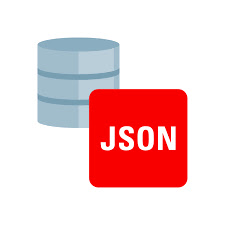Oracle Database JSON Examples
- 1-1: A JSON Object (Representation of a JavaScript Object Literal)
- 2-1: Converting Textual JSON Data to JSON Type On the Fly
- 2-2: Adding Time Zone Information to JSON Data
- 2-3: Using JSON_SERIALIZE To Convert JSON type or BLOB Data To Pretty-Printed Text
- 2-4: Using JSON_SERIALIZE To Convert Non-ASCII Unicode Characters to ASCII Escape Codes
- 4-1: Creating a Table with a JSON Type Column
- 4-2: Using IS JSON in a Check Constraint to Ensure Textual JSON Data is Well-Formed
- 4-3: Inserting JSON Data Into a JSON Column
- 5-1: Using IS JSON in a Check Constraint to Ensure Textual JSON Data is Strictly Well-Formed
- 7-1: JDBC Client: Using the LOB Locator Interface To Retrieve JSON BLOB Data
- 7-2: JDBC Client: Using the LOB Locator Interface To Retrieve JSON CLOB Data
- 7-3: ODP.NET Client: Using the LOB Locator Interface To Retrieve JSON BLOB Data
- 7-4: ODP.NET Client: Using the LOB Locator Interface To Retrieve JSON CLOB Data
- 7-5: JDBC Client: Using the LOB Data Interface To Retrieve JSON BLOB Data
- 7-6: JDBC Client: Using the LOB Data Interface To Retrieve JSON CLOB Data
- 7-7: JDBC Client: Reading Full BLOB Content Directly with getBytes
- 7-8: JDBC Client: Reading Full CLOB Content Directly with getString
- 7-9: ODP.NET Client: Reading Full BLOB Content Directly with getBytes
- 7-10: ODP.NET Client: Reading Full CLOB Content Directly with getString
- 8-1: Creating a Partitioned Table Using a JSON Virtual Column
- 11-1: Updating a JSON Column Using JSON_TRANSFORM
- 11-2: Modifying JSON Data On the Fly With JSON_TRANSFORM
- 11-3: Adding a Field Using JSON_TRANSFORM
-
Oracle Database JSON Examples Oracle Database JSON Examples
- 1-1: A JSON Object (Representation of a JavaScript Object Literal)
- 2-1: Converting Textual JSON Data to JSON Type On the Fly
- 2-2: Adding Time Zone Information to JSON Data
- 2-3: Using JSON_SERIALIZE To Convert JSON type or BLOB Data To Pretty-Printed Text
- 2-4: Using JSON_SERIALIZE To Convert Non-ASCII Unicode Characters to ASCII Escape Codes
- 4-1: Creating a Table with a JSON Type Column
- 4-2: Using IS JSON in a Check Constraint to Ensure Textual JSON Data is Well-Formed
- 4-3: Inserting JSON Data Into a JSON Column
- 5-1: Using IS JSON in a Check Constraint to Ensure Textual JSON Data is Strictly Well-Formed
- 7-1: JDBC Client: Using the LOB Locator Interface To Retrieve JSON BLOB Data
- 7-2: JDBC Client: Using the LOB Locator Interface To Retrieve JSON CLOB Data
- 7-3: ODP.NET Client: Using the LOB Locator Interface To Retrieve JSON BLOB Data
- 7-4: ODP.NET Client: Using the LOB Locator Interface To Retrieve JSON CLOB Data
- 7-5: JDBC Client: Using the LOB Data Interface To Retrieve JSON BLOB Data
- 7-6: JDBC Client: Using the LOB Data Interface To Retrieve JSON CLOB Data
- 7-7: JDBC Client: Reading Full BLOB Content Directly with getBytes
- 7-8: JDBC Client: Reading Full CLOB Content Directly with getString
- 7-9: ODP.NET Client: Reading Full BLOB Content Directly with getBytes
- 7-10: ODP.NET Client: Reading Full CLOB Content Directly with getString
- 8-1: Creating a Partitioned Table Using a JSON Virtual Column
- 11-1: Updating a JSON Column Using JSON_TRANSFORM
- 11-2: Modifying JSON Data On the Fly With JSON_TRANSFORM
- 11-3: Adding





0 Comments